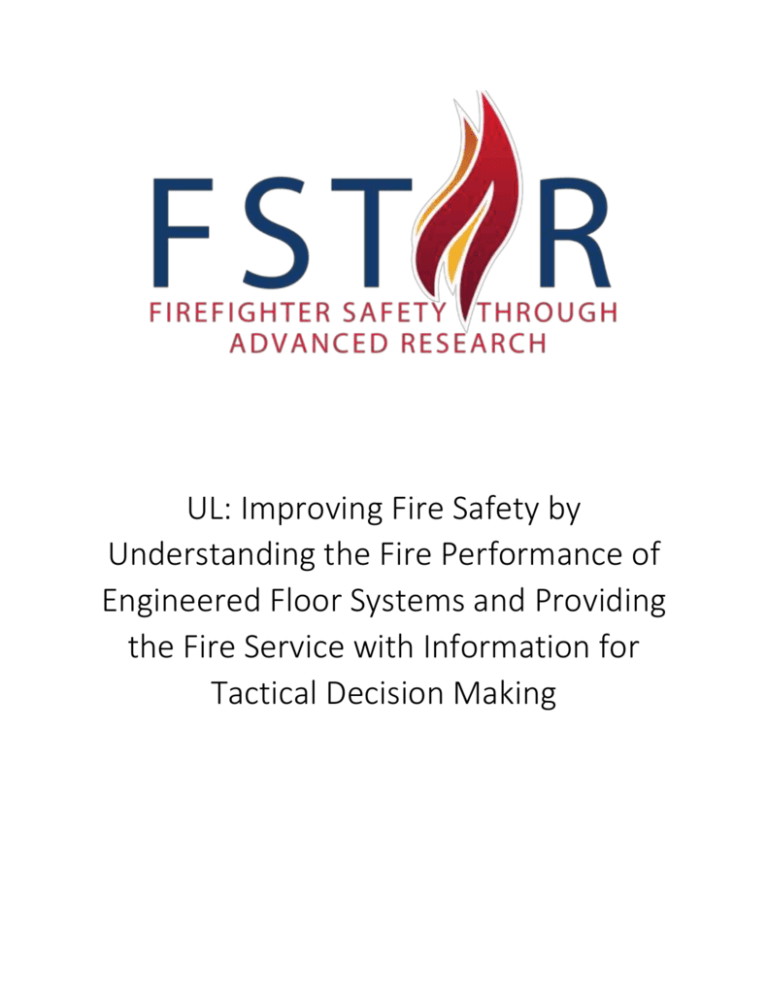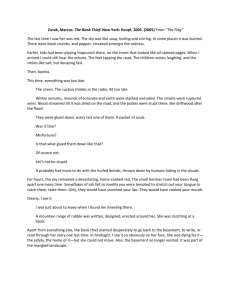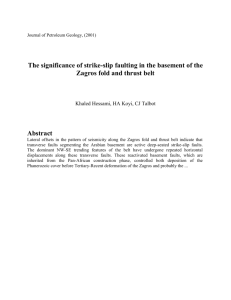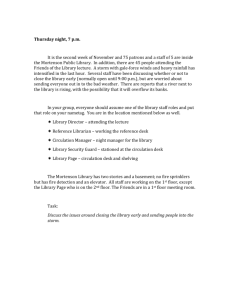Read the Report
advertisement

UL: Improving Fire Safety by Understanding the Fire Performance of Engineered Floor Systems and Providing the Fire Service with Information for Tactical Decision Making Synopsis Takeaways & Tactics Several research organizations, product manufacturers, and fire service representatives collaborated to examine the fire response hazards associated with residential flooring systems. The series of experiments examined how basement fires impacted collapse and were designed to help the fire service review tactics and make improved decisions on the fire scene. This study helps dispel some of the myths that firefighters have historically believed, learned, and/or put into practice. Many firefighters learned that if they quickly descended the basement stairs, they would find cooler temperatures. The experiments conducted in this study showed that temperatures at the bottom of the basement stairs where often worse than the temperatures at the top of the stairs. Additionally, firefighters often used floor sag as an indicator of floor collapse. These experiments proved that floor sag is a poor indicator of floor collapse, as it may be very difficult to determine the amount of deflection while moving through a structure. Experimental Methodology Experiments examined several types of floor joists including dimensional lumber, engineered I-joists, metal-plate-connected wood trusses, steel C-joists, castellated I-joists and hybrid trusses. The experiments were performed at multiple scales to examine single floor system joists up through a full floor system in an acquired structure. Applied load, ventilation, fuel load, span and protection methods were altered to provide important information about the impact of these variables on structural stability and firefighter safety. All unprotected wood floor systems can collapse within the operational timeframe of the fire service, regardless of response time. Sounding the floor for stability will not reliably indicate stability and must be used in conjunction with other tactics to increase safety. 3600 Size-up should include the location of the basement fire as well as the amount of ventilation. Collapse always originated above the fire and the more ventilation available, the faster the time to floor collapse. Thermal imagers may help indicate there is a basement fire but can't be used to assess structural integrity from above. When possible the floor should be inspected from below prior to operating above it. Signs of collapse vary by floor system: dimensional lumber should be inspected for joist rupture or complete burn through; engineered I-joists should be inspected for web burn through and separation from subflooring; parallel chord trusses should be inspected for connection failure; and metal C-joists should be inspected for deformation and subfloor connection failure. Avoid attacking a basement fire from a stairway as it places you directly in the flow path of hot gases coming up the stairs. Coordinating ventilation is extremely important. The experiment results indicate that ventilating the basement created a flow path up the stairs and out through the front door of the structure, nearly doubling the speed of the hot gases and increasing temperatures to levels that could cause injury or death to a fully protected firefighter. Gas temperatures in the room above the fire can be a poor indicator of both the fire conditions below and the structural integrity of the flooring system. Charged hose lines should be available when opening up void spaces to expose wood floor systems. Read the Report http://www.ul.com/global/documents/offering s/industries/buildingmaterials/fireservice/base mentfires/2009%20NIST%20ARRA%20Compilati on%20Report.pdf





